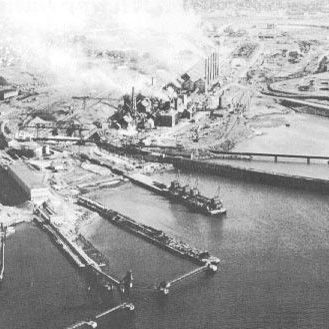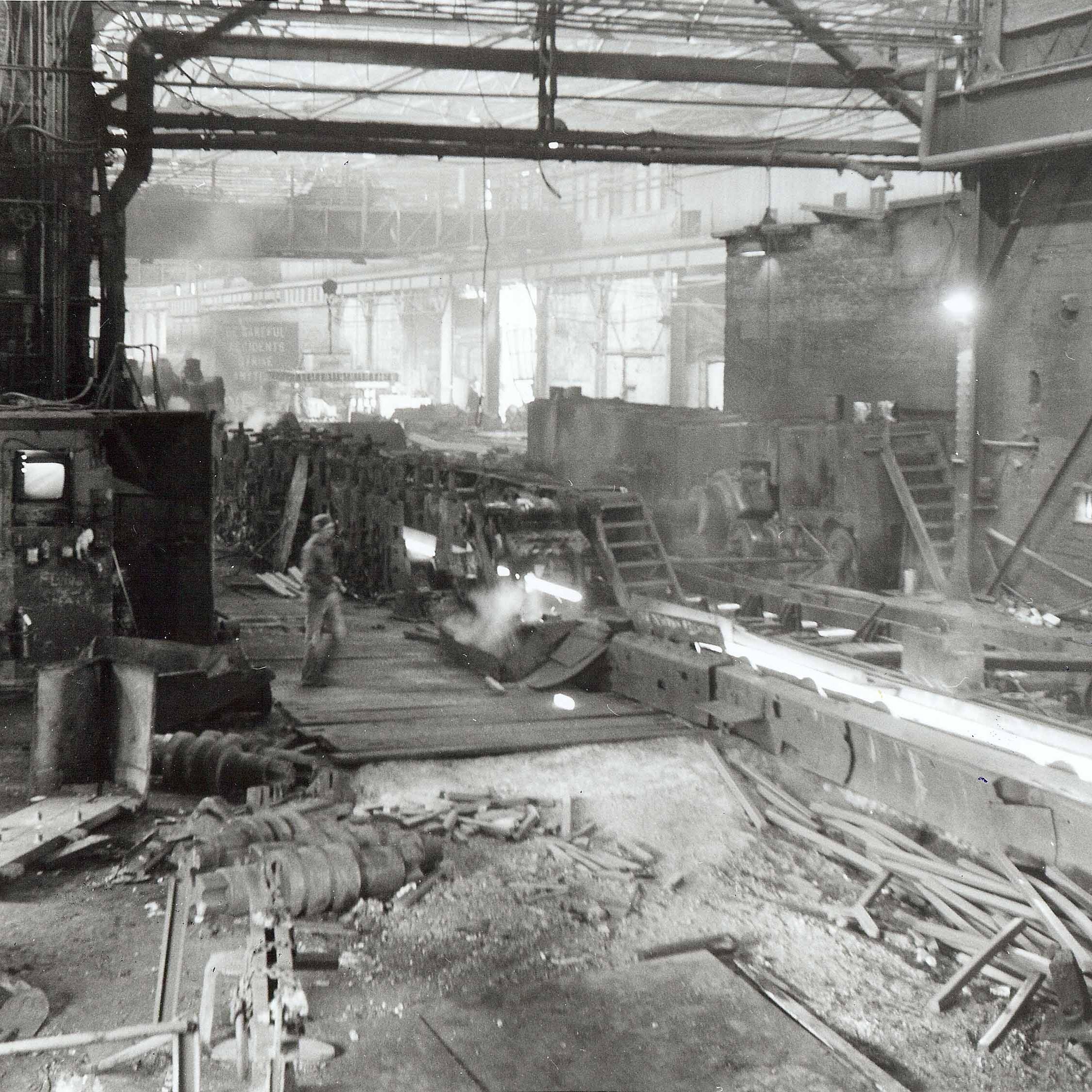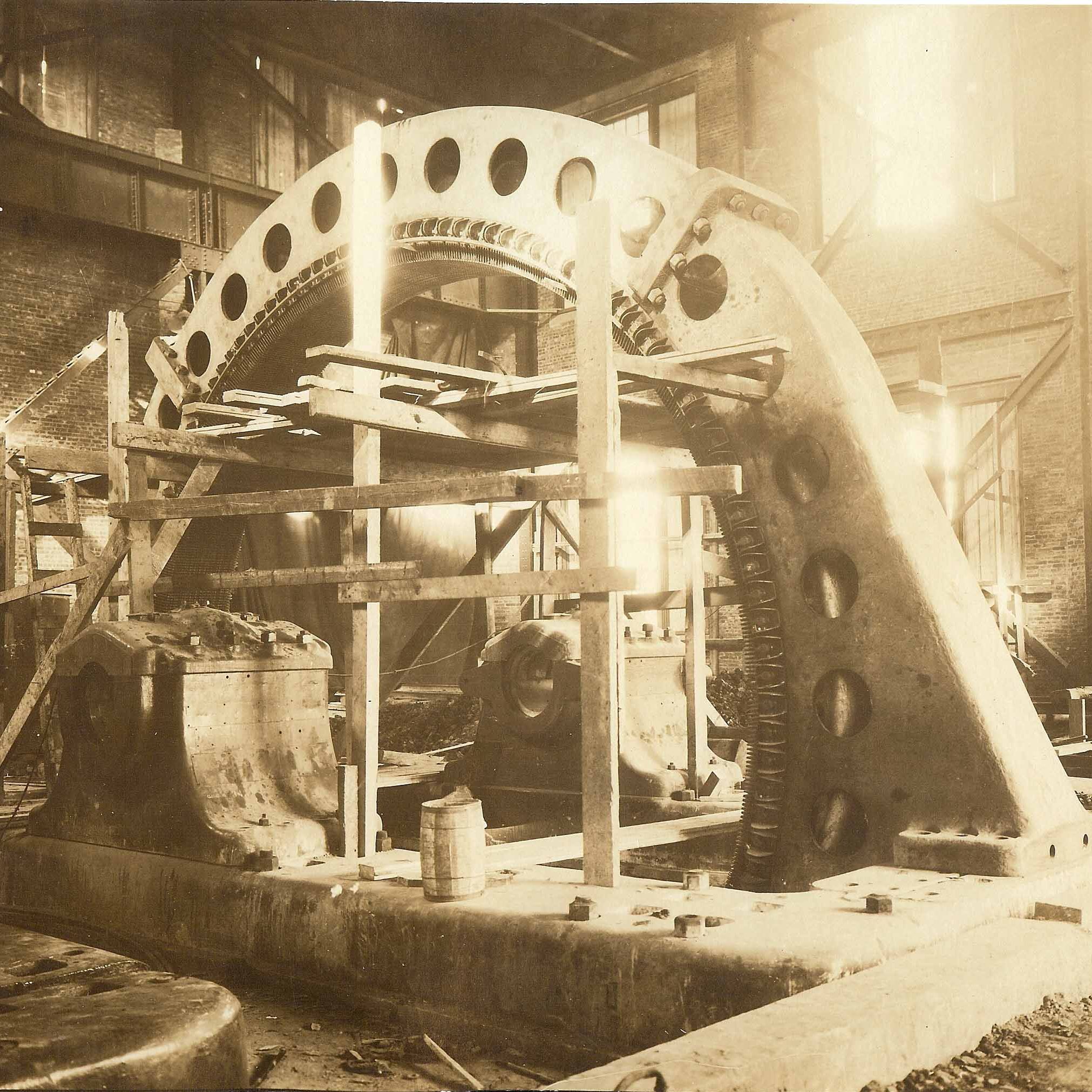The Sydney Mines Steel Plant 1902 – 1921
by Sydney Slaven
A stroll through the barren fields between Pitt St. and the Atlantic Ocean at Sydney Mines reveals two odd coloured mounds, one reddish and the other white. These are piles of iron ore and limestone, the only legacy of a large steel plant that operated on this site for almost twenty years.
The steel plant at Sydney Mines was built to feed the Trenton Works of the Nova Scotia Steel and Coal Corporation (SCOTIA) in order to meet the demands of the rapidly expanding railroads of North America. The plant was ideally located in Sydney Mines because Cape Breton was the most easterly termination point of the trans continental railways. Sydney Mines also provided a waterway to the world.
The Trenton Works, near New Glasgow, produced metal rail cars, axle and wheels. Prior to the Sydney Mines Plant, a primitive iron and steel plant had begun operations at Ferrona near New Glasgow. Unfortunately, the technology was uneven and the local iron ore was of poor quality. In 1879 a Siemens Open Hearth Furnace produced the first steel in Canada here although it was noted to be a “mild steel.”
In 1893 Scotia acquired the iron ore mine at Wabana, Nfld. They sold a half interest in the mine to the Dominion Steel Corporation who intended to construct a steel plant at Sydney. The proceeds from this sale were used to buy out the General Mining Associations coalmines and to construct a steel plant using the most advanced technology of the day.
Construction of the plant began in 1901 and it began operating in 1902. Iron ore was shipped from Wabana while the limestone came from a quarry at Point Edward, (still used as a swimming hole by local youths.) The set up of the plant provided for a very efficient operation. A battery of Coke Ovens was built next to the Princess Coal Mine. Close by was a Blast Furnace capable of an output of 300 tons of iron daily. This iron fed into three 50-ton Open Hearth Furnaces. There was also a 30-ton Metal Mixer on site although the Open Hearths had the ability to accept iron directly from the Blast Furnace. There was also a Compressor Press Shop located in line with the Ingot Casting Floor and could handle 5 to 30 ton ingots.
The Sydney Mines Plant was about one third the size of the plant constructed simultaneously by Disco at Sydney. The Scotia Plant employed about 1000 to 1500 steelworkers. The population of Sydney Mines increased from 3000 to 5000 with the arrival of the mill.
For the first twelve years the plant was moderately successful as it had a ready market for steel at the Trenton Works. However, a hoped for offshore pig iron market never materialized. The first part of the Great War, 1914 – 1918, was a boom time because a munitions factory was built at Trenton and this took the entire product the Sydney Mines Plant could produce.
1920 saw the establishment of the largest corporation in Canada by a British syndicate known as the British Empire Steel Corporation, BESCO. Included were the steel plants at both Sydney Mines and Sydney. At about the same time the steel industry went into a recession. (Many historians claim the Great Depression started in Cape Breton tens years before the rest of the world.) Besco was vastly undercapitalized and as part of a survival mode decided the Sydney Steel Plant could easily feed the Trenton Works. This resulted in the closure of the Sydney Mines Plant in 1921.The Compressor Shop was shipped to Trenton and a few overhead cranes and roll motors went to Sydney. However, the rest of the plant was scraped.
It was certainly an economic blow to the town of Sydney Mines but, fortunately, over time it recovered from the closure. Some of the steelworkers went to the Compressor Plant at Trenton while others procured work at the Sydney Works. A number boarded the “Harvest Trains” to Western Canada and never returned. The coal industry was still expanding and most of the former steelworkers became coal miners in time.
The plant seems to be an almost forgotten part of the industrial history of Cape Breton. This is unfortunate, especially because of the important role it played in producing steel for munitions and ships, which immensely helped the Allied Powers to triumph over the German – Austria Hungary Axis in the first part of the Great War.


